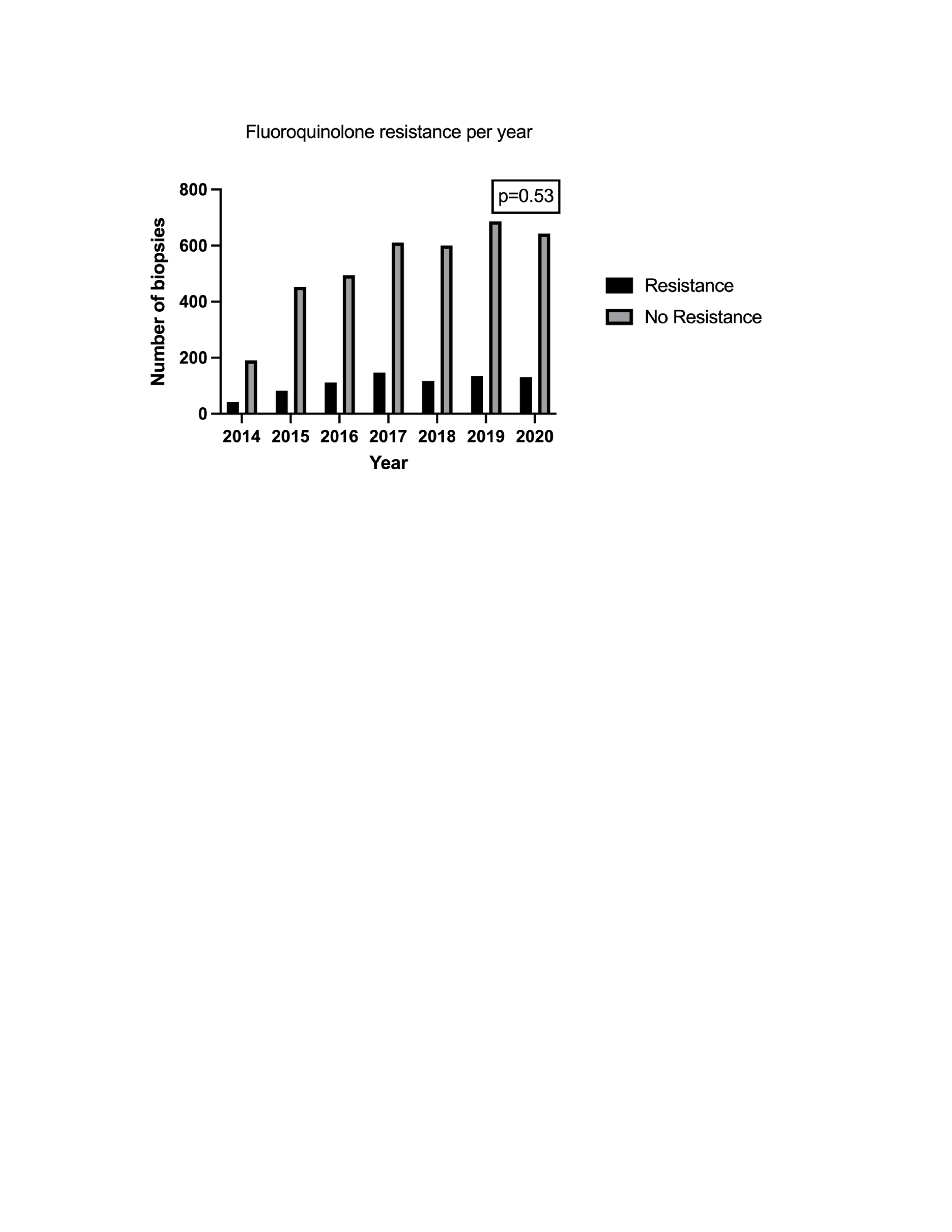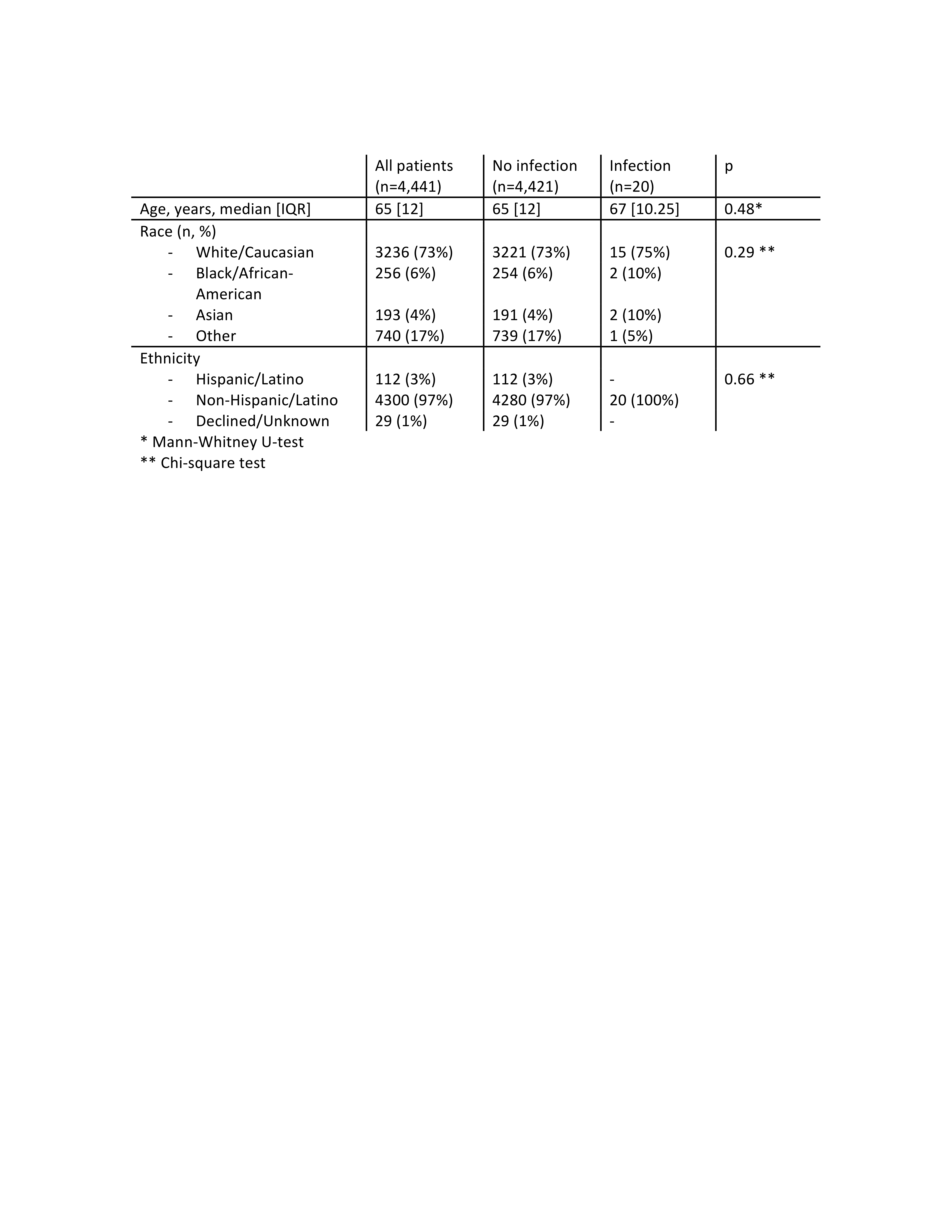Back
Poster, Podium & Video Sessions
Moderated Poster
MP53: Prostate Cancer: Detection & Screening V
MP53-17: Culture-directed antimicrobial prophylaxis in transrectal ultrasound-guided prostate biopsies: Contemporary 7-year experience
Monday, May 16, 2022
7:00 AM – 8:15 AM
Location: Room 225
Steven A Sidelsky*, Chicago, IL, Pooja Talaty, Pranvera Sulejmani, Mira Suseno, Sandra Naegele, Kristian Novakovic, Brian T Helfand, Alexander P Glaser, Evanston, IL

Steven Sidelsky, MD
University of Chicago
Poster Presenter(s)
Introduction: Infectious complications can occur in 1-5% of patients undergoing transrectal ultrasound-guided prostate needle biopsy (TRUS-PNB). Resistance to fluoroquinolones (FQ) has led to use of a pre-biopsy rectal swab to examine for FQ-resistant flora. As our practice and many others transition to transperineal (TP) biopsies, we sought to study the rate of infectious complications in a contemporary TRUS-PNB series with pre-biopsy rectal swabs.
Methods: Patients undergoing TRUS-PNB from 1/1/2014-12/31/2020 were identified using the Enterprise Data Warehouse. Clinical variables, rectal swab results, prophylactic antibiotic given, blood and urine cultures, admissions, and mortality within 90 days was extracted. Chart review was performed for all patients with a blood culture ordered within 90 days of TRUS-PNB.
Results: Of the 4,441 patients who underwent TRUS-PNB, 15-19% had FQ-resistant flora, and this rate did not significantly change per year (Figure 1; p=0.53). Thirty-nine (0.9%) patients had a blood culture ordered within 90 days. Chart review of these patients confirmed 20 (0.45%) were admitted with post-biopsy infection (Table 1). Others had blood cultures ordered for issues unrelated to prostate biopsy including post-prostatectomy complications (n=6), pneumonia (n=4), DVT/PE (n=2), ureteral stone (n=1), acute cholecystitis (n=1), and other unrelated issues (n=3). There were no identified deaths within 90 days. The rate of post-biopsy infection was higher for men with FQ-resistant flora (1.17%) compared to men without FQ-resistant flora (0.3%; p=0.0035).
Conclusions: Rates of admission for infection after culture-directed antimicrobial prophylaxis are low (~0.5%). Men with FQ-resistance are at higher risk for infection despite targeted prophylaxis. This data serves as a contemporary series for comparison as many practices transition to TP biopsy.
Source of Funding: None


Methods: Patients undergoing TRUS-PNB from 1/1/2014-12/31/2020 were identified using the Enterprise Data Warehouse. Clinical variables, rectal swab results, prophylactic antibiotic given, blood and urine cultures, admissions, and mortality within 90 days was extracted. Chart review was performed for all patients with a blood culture ordered within 90 days of TRUS-PNB.
Results: Of the 4,441 patients who underwent TRUS-PNB, 15-19% had FQ-resistant flora, and this rate did not significantly change per year (Figure 1; p=0.53). Thirty-nine (0.9%) patients had a blood culture ordered within 90 days. Chart review of these patients confirmed 20 (0.45%) were admitted with post-biopsy infection (Table 1). Others had blood cultures ordered for issues unrelated to prostate biopsy including post-prostatectomy complications (n=6), pneumonia (n=4), DVT/PE (n=2), ureteral stone (n=1), acute cholecystitis (n=1), and other unrelated issues (n=3). There were no identified deaths within 90 days. The rate of post-biopsy infection was higher for men with FQ-resistant flora (1.17%) compared to men without FQ-resistant flora (0.3%; p=0.0035).
Conclusions: Rates of admission for infection after culture-directed antimicrobial prophylaxis are low (~0.5%). Men with FQ-resistance are at higher risk for infection despite targeted prophylaxis. This data serves as a contemporary series for comparison as many practices transition to TP biopsy.
Source of Funding: None



.jpg)
.jpg)